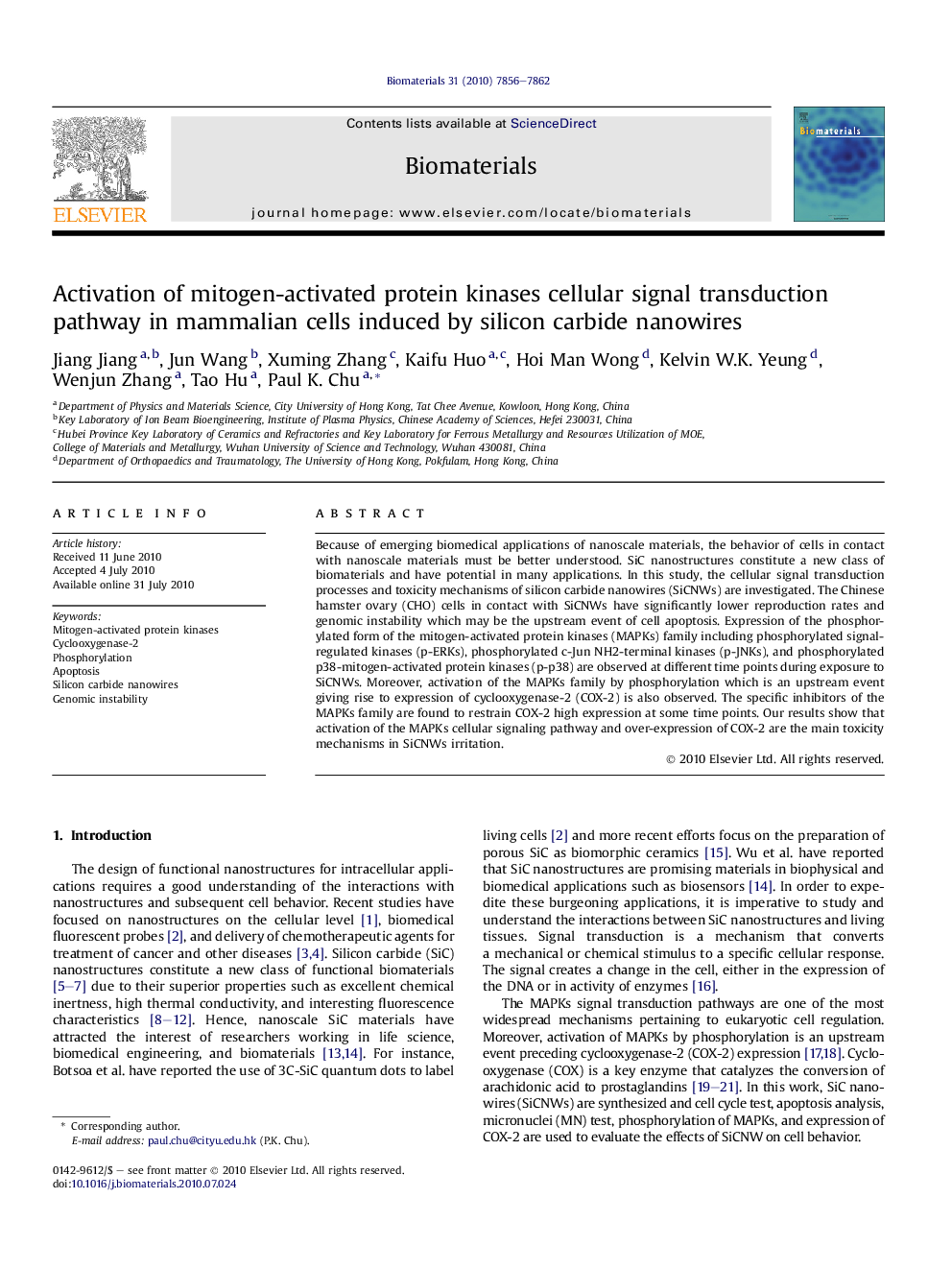| Article ID | Journal | Published Year | Pages | File Type |
|---|---|---|---|---|
| 8043 | Biomaterials | 2010 | 7 Pages |
Because of emerging biomedical applications of nanoscale materials, the behavior of cells in contact with nanoscale materials must be better understood. SiC nanostructures constitute a new class of biomaterials and have potential in many applications. In this study, the cellular signal transduction processes and toxicity mechanisms of silicon carbide nanowires (SiCNWs) are investigated. The Chinese hamster ovary (CHO) cells in contact with SiCNWs have significantly lower reproduction rates and genomic instability which may be the upstream event of cell apoptosis. Expression of the phosphorylated form of the mitogen-activated protein kinases (MAPKs) family including phosphorylated signal-regulated kinases (p-ERKs), phosphorylated c-Jun NH2-terminal kinases (p-JNKs), and phosphorylated p38-mitogen-activated protein kinases (p-p38) are observed at different time points during exposure to SiCNWs. Moreover, activation of the MAPKs family by phosphorylation which is an upstream event giving rise to expression of cyclooxygenase-2 (COX-2) is also observed. The specific inhibitors of the MAPKs family are found to restrain COX-2 high expression at some time points. Our results show that activation of the MAPKs cellular signaling pathway and over-expression of COX-2 are the main toxicity mechanisms in SiCNWs irritation.
